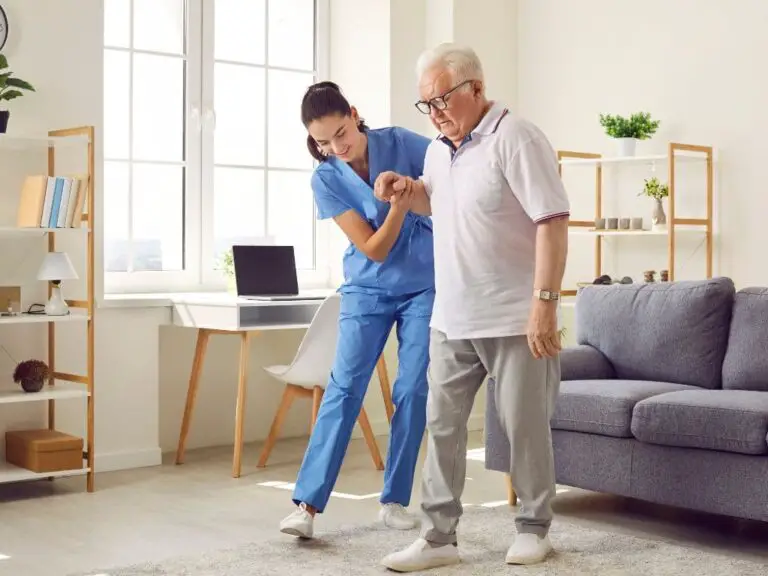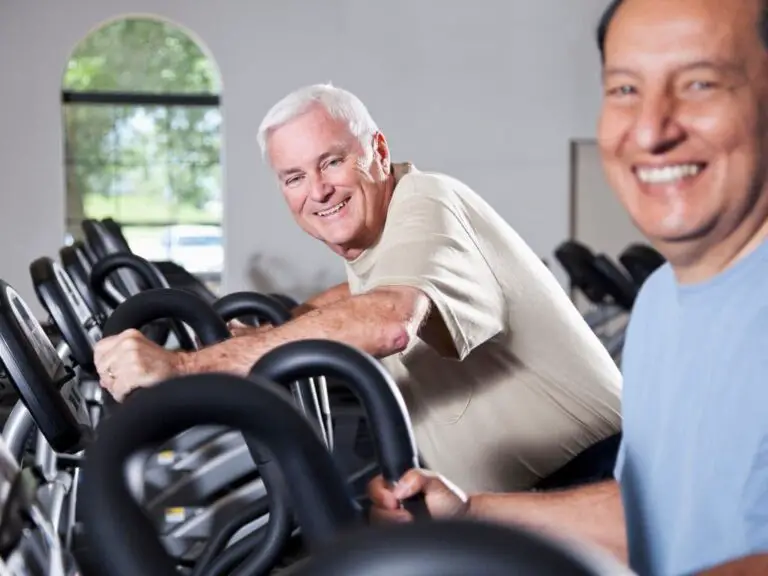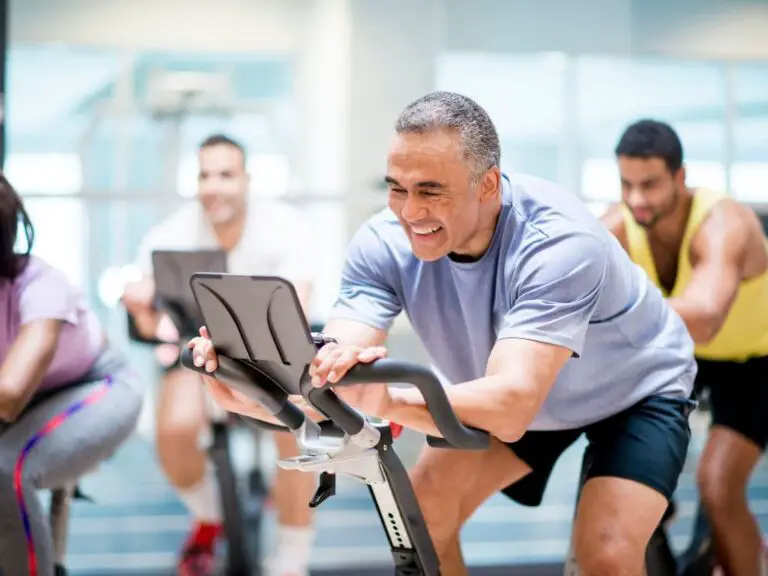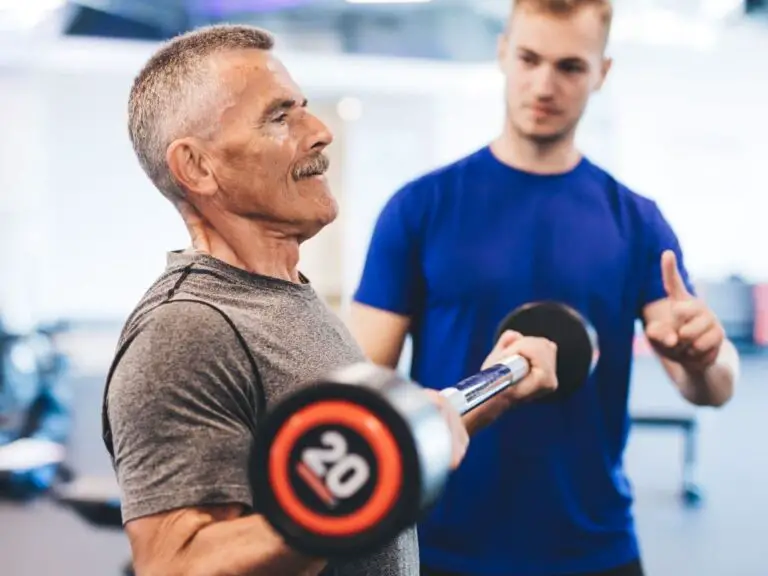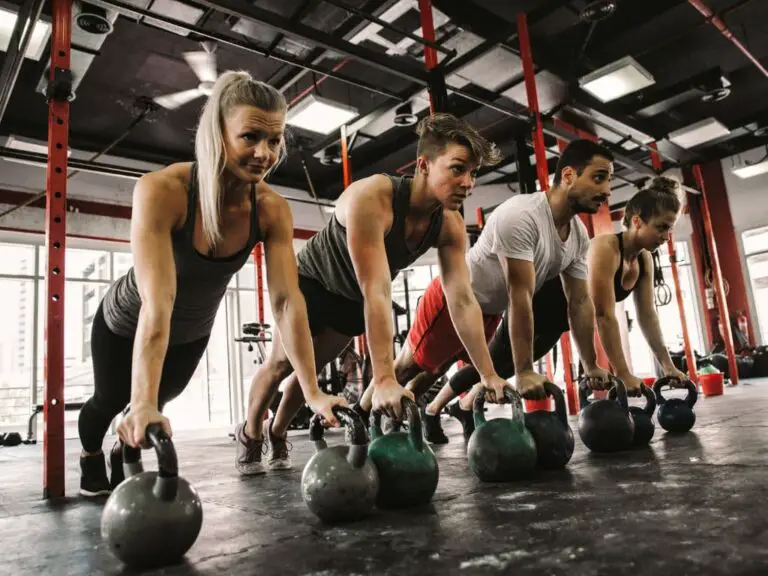How Long Does It Take to Build Upper Body Strength?
As we age, maintaining and building upper body strength becomes increasingly important for preserving mobility, balance, and independence. However, many seniors are unsure where to start when it comes to strength training. One common question is how long it takes to make meaningful improvements in upper body strength through focused exercise.
Building upper body strength varies based on an individual’s fitness level. Previously sedentary individuals may notice gains in 4-8 weeks, somewhat active individuals in 2-4 weeks, and those already fit within 1-2 weeks. Consistent strength training sessions 2-3 times per week are key to building muscle mass and strength.
The answer depends on several factors including your starting fitness level and the type, frequency and intensity of the strength training you engage in. With a strategic approach and dedication to regular workouts, most seniors can build noticeable upper body strength within a few weeks or months.
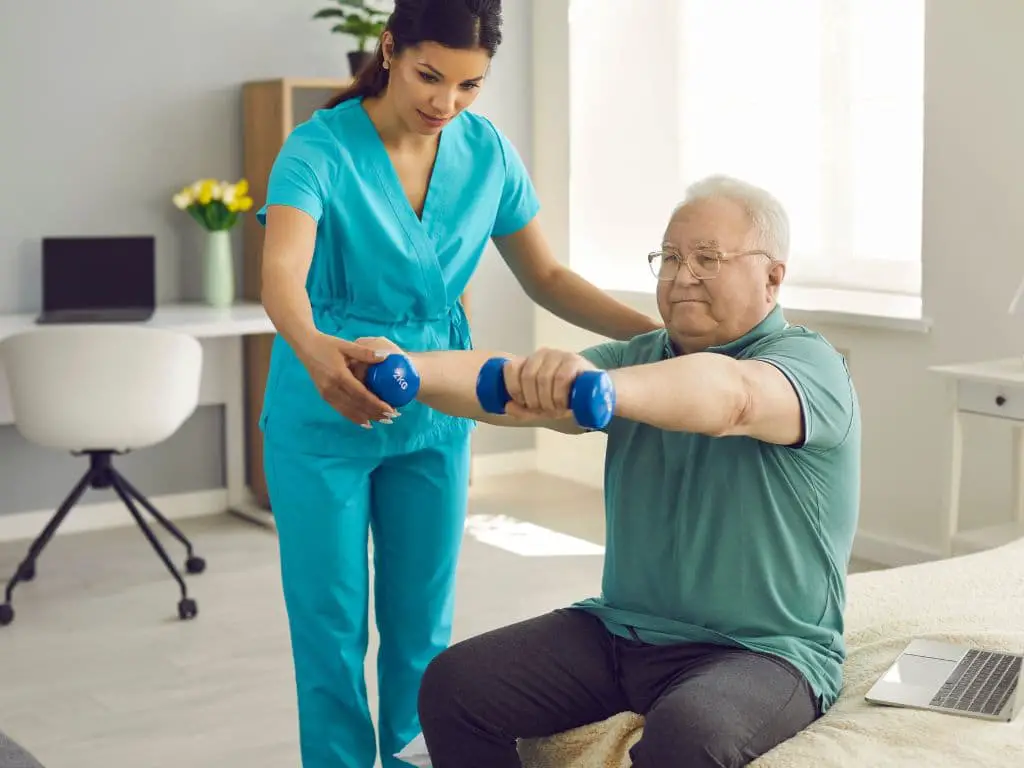
How Long Does It Take to Build Upper Body Strength?
The timeline for building upper body strength will vary based on your current fitness level and health status. Here are some general estimates:
| Fitness Level | Time to Noticeable Gains |
|---|---|
| Previously sedentary | 4-8 weeks |
| Somewhat active | 2-4 weeks |
| Already fit | 1-2 weeks |
The key is consistency with strength training sessions 2-3 times per week. Challenging your muscles with added resistance helps stimulate increases in muscle mass and strength. Progress may seem slow at first, but sticking with it pays off. Tracking reps, weight lifted, and progress over time can help you stay motivated.
What is the Importance of Upper Body Strength for Seniors?
Upper body strength is crucial for supporting activities of daily living as we get older. Age-related muscle loss (sarcopenia) leads to reduced strength, especially in the arms and shoulders. Weak upper body muscles negatively impact balance, making falls and injuries more likely. Building upper body strength helps counteract these effects for better mobility and independence in later life. From lifting groceries to playing with grandkids, strong upper bodies allow seniors to remain active and engaged.
Resistance training is key to offsetting age-related strength decline. Exercises that make muscles work against added weight not only build bigger muscles but also strengthen bones and stimulate muscle fibers to respond better to protein. This helps prevent the loss of muscle mass that comes with aging. Functional fitness programs designed specifically for seniors focus on building total body strength for real-world activities.
How does Upper Body Strength Training Benefit Seniors?
Dedicated upper body strength training provides a variety of benefits for seniors:
- Increased muscle mass resulting in more functional strength for daily tasks.
- Improved bone density helping prevent osteoporosis and fractures.
- Enhanced metabolism and blood sugar regulation.
- Reduced effects of conditions like arthritis and back pain.
- Better cardiovascular health from combined strength and aerobic training.
In addition to direct muscle strengthening effects, resistance training helps maintain mobility in your shoulders, arms and hands. Performing compound exercises and lifting weights in the 10-15 rep range builds endurancenecessary for activities like carrying groceries or playing with grandkids. A mix of isolation and multi-joint exercises ensures balanced strength development.
What are Some Safe and Effective Upper Body Exercises for Seniors?
It’s wise for seniors to start with low-impact upper body exercises before progressing to weight lifting:
- Stretches and mobility exercises for your neck, arms, and shoulders.
- Beginner calisthenics like push-ups against a wall and arm circles with light resistance bands.
- Everyday activities like sweeping and yardwork that utilize upper body muscles.
When ready for weights, proper form and lighter loads are key. Excellent upper body exercises include:
- Bicep curls and tricep extensions with dumbbells or machines. Start with 10-15 reps.
- Modified push-ups and plank holds to build shoulder and core strength.
- Lat pulldowns to target back muscles. Use lighter resistance.
- Shoulder presses and lateral raises with very light weights or resistance bands.
Remember to progress slowly over weeks and months. Add an extra rep or a little weight each session to continually challenge muscles while avoiding injury.
How Often Should Seniors Engage in Strength Training?
Building upper body strength typically involves a workout routine of 45-60 minutes, performed 2-3 times per week. This includes exercises targeting the chest, back, shoulders, and arms. However, significant results generally appear after 6-8 weeks of consistent and progressive training.
Experts recommend seniors engage in total body strength training 2-3 times per week. Allow at least a full day of rest between strength sessions for optimum muscle recovery.
Balance your program with:
- Upper body exercises during one strength session.
- Lower body exercises during a separate strength session.
- Total body moves that incorporate both upper and lower muscles in a third strength workout.
Start with two strength sessions per week and add a third if you recover well. Also remember to include at least two days focused on flexibility training and cardiovascular exercise like brisk walking.
How Much Weight Should Seniors Lift During Strength Training?
There are no universal weight recommendations for seniors. The appropriate amount of weight depends on your current fitness and strength levels. As a general guideline:
- Beginners should start with lighter weights allowing 15+ reps per set. Focus on perfecting form.
- Intermediates can progress to moderate weights for 10-15 reps per set.
- Advanced exercisers may use heavier weights for 8-10 reps per set.
Choose a weight where the last few reps of each set feel moderately challenging. If you struggle to complete 8 reps with proper form, lower the weight. Increase weight increments by about 5% as you progress over time. Avoid straining with heavy weights that compromise form and risk injury.
How can Nutrition and Hydration Support Strength Training for Seniors?
Proper nutrition and hydration are vital for fueling workouts and providing the building blocks for increased muscle mass. Be sure to consume:
- Adequate protein from lean meats, dairy, beans, eggs, and supplements if needed.
- Complex carbs from fruits, vegetables, and whole grains for energy.
- Healthy fats from foods like nuts, seeds, avocados, and olive oil.
- Extra calories to meet demands from intense strength sessions.
Stay well hydrated before, during, and after exercise. Carry a water bottle during your workout. Drinking enough water helps deliver nutrients to muscles and aids recovery.
How can Seniors Stay Motivated to Maintain and Improve Upper Body Strength?
Consistent strength training is key but staying motivated can be challenging. These tips can help:
- Set specific yet realistic goals for what you want to achieve. Measure progress weekly.
- Find a workout buddy or join a senior fitness class for camaraderie.
- Track reps, weights lifted, and progress. Seeing improvements is encouraging.
- Do exercises you enjoy – if it’s not fun you probably won’t stick with it.
- Focus on how much better daily life is with improved upper body strength.
What Resources are Available for Seniors Interested in Strength Training?
Many excellent resources exist for seniors looking to improve their upper body fitness:
- Local gyms and recreation centers often offer senior-specific classes.
- Physical therapists can provide personalized programs.
- Books and online videos demonstrate proper technique for many strength exercises.
- Fitness apps offer guided workouts and the ability to track progress.
- Some retirement facilities have wellness centers or trainers on-site.
Getting instruction from a personal trainer, at least initially, ensures you learn proper form and technique. Some provide in-home sessions. Finding a workout program suited to your fitness level and health needs maximizes results.
Conclusion
Building upper body strength presents great benefits for seniors but requires dedication and patience. While results will vary based on your starting point and program, most can achieve noticeable improvements within a few weeks of focused training. A strategic approach is key, involving proper exercise selection, nutrition, hydration, rest, and tracking progress. With regular strength sessions 2-3 times per week, seniors can regain and maintain the upper body fitness needed to stay active and independent.
Frequently Asked Questions
-
How long does it take to build upper body strength?
A visible difference can be seen in three to four weeks. After 12 weeks you will start to see real changes, however, it all depends on what goals and strength training methods are used, says Haroldsdottir.
-
What exercise is good for muscle weakness?
Although a vigorous program of walking, running, or swimming can increase your energy, strength training and resistance exercise are the best ways to build muscles (or weight lifting).
-
Does exercise help Crepey arms?
Crepey skin can be improved by exercise. Exercise can make our muscles stronger, longer and more tighter. This helps to firm the skin around them. Our muscles are more prominent, which can reduce the appearance of crepey, loose skin.
-
How long should a full upper body workout be?
The workout duration is only for exercise, and not to do chores or taxes between sets. If done correctly, the typical full-body exercise should last between 45-60 minutes and include 3 sets of 10 reps, 8-10 exercises, 45-60 second rest, and three sets of 10 reps. You don’t have much time left.
-
What are 3 upper body exercises recommended?
This workout involves the classic upper-body moves of pullups and pushups as well as tricep dips. You simply need to set the timer for 30 minutes, and do as many repetitions as possible of each exercise.
-
How do you strengthen a weak upper body?
Answer: Pull-ups or push-ups are the best exercises for strengthening weak upper bodies. These exercises have been done since grade school. We’ve moved on to other weight machines and stacks.
-
Can muscle weakness be cured?
They can be common or rare, severe to major, minor to permanent. Most cases of muscle weakness that are not obvious can be reversed. Sometimes, muscle weakness does not indicate a serious disease.
-
Why do my shoulders and arms feel weak?
There are many causes for muscle weakness. Common conditions include pinched nerves in the neck or shoulder nerve issues. Continue reading to find out what could be causing your arm weakness.
-
Why do my arms feel tired and heavy?
If muscles aren’t used frequently, they can become weaker and smaller. MyMSTeam members often experience this struggle as they find it difficult to stay fit and exercise due to heat sensitivity and fatigue. This can cause weak and heavy arms over time.
-
How long should an upper body workout be?
Thompson says that while the exact time will vary depending on what you are trying to accomplish, 20-60 minutes should be a reasonable range. You can divide your time according to the muscle groups (e.g., chest, triceps and back on one day and biceps and triceps on another).
-
What causes old lady arms?
Age. Age is often responsible for flabby arms. Your skin becomes thinner as you age and your connective tissue begins to degrade. This is unless you are willing to have plastic surgery.
-
Can flabby upper arms be toned?
While there are no quick fixes for arm fat, you can dramatically improve your appearance by combing specific exercises to tone and build muscle with a healthy diet and lots of cardio exercises.
-
Why do older women’s arms get flabby?
Flabby arms can be caused by a variety of factors, such as an increase in body fat (which may cause a larger portion to form around the arms in women with higher genetic risk), decreased activity and loss of muscle mass. This causes the skin to hang longer.
-
Why are my arms so weak?
An injury or repetitive strain injury can cause weakness in your arms. You may require immediate medical attention if you have left arm weakness and chest pain.
-
How many times a week should I train upper body?
Upper body: At minimum 2 days per week. Your back, chest, shoulders, arms and chest require muscle-building at least 2 times per week.

